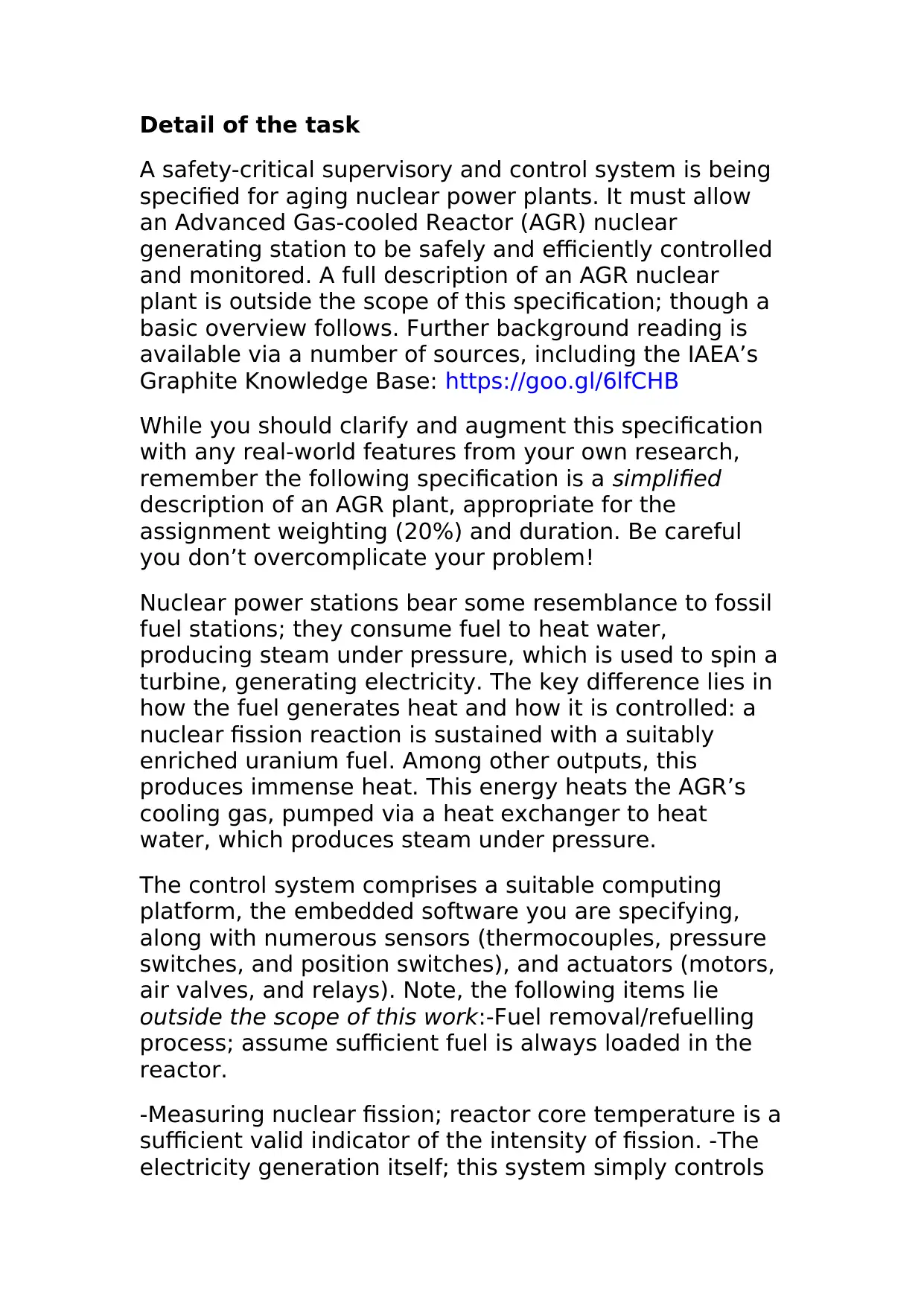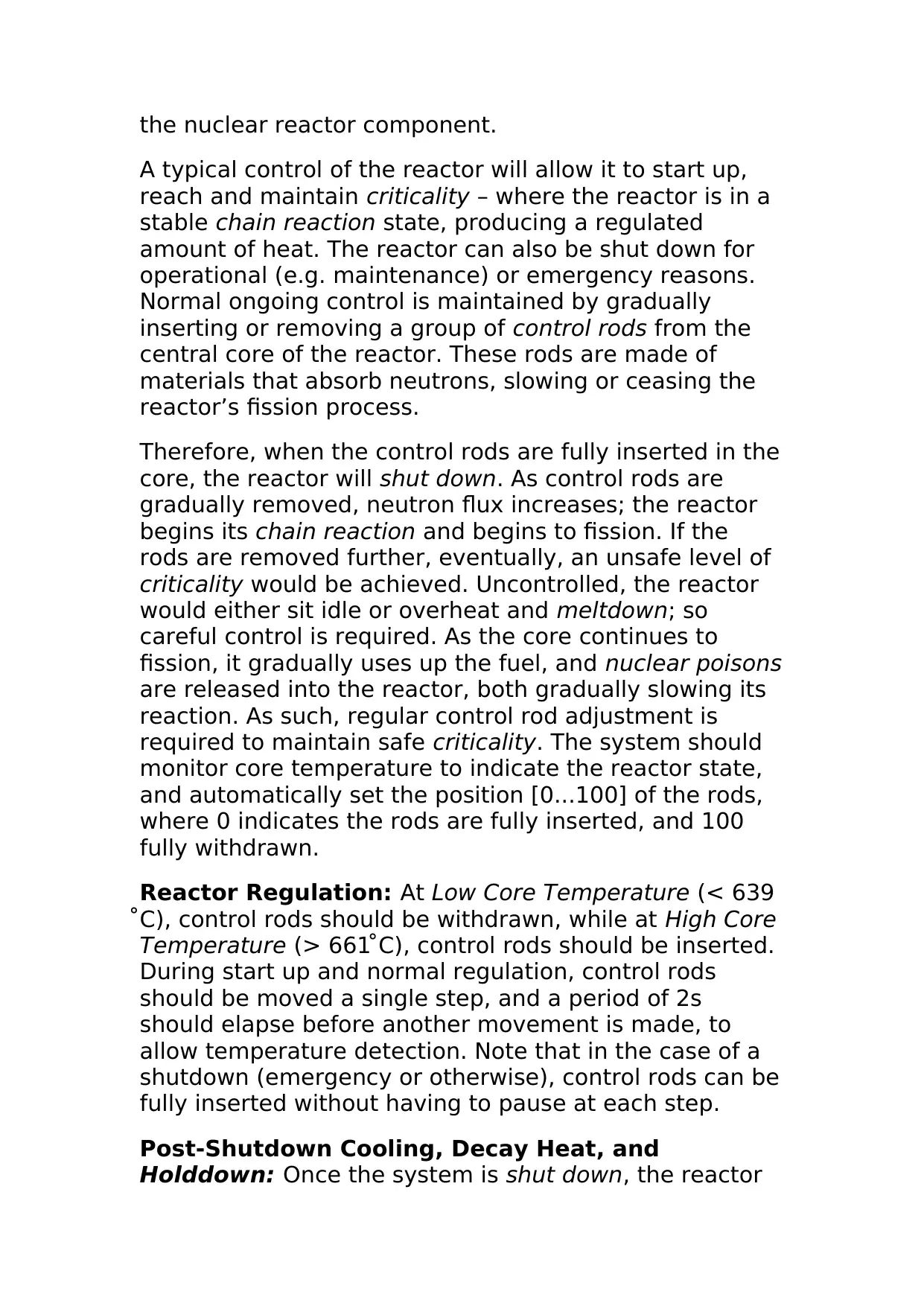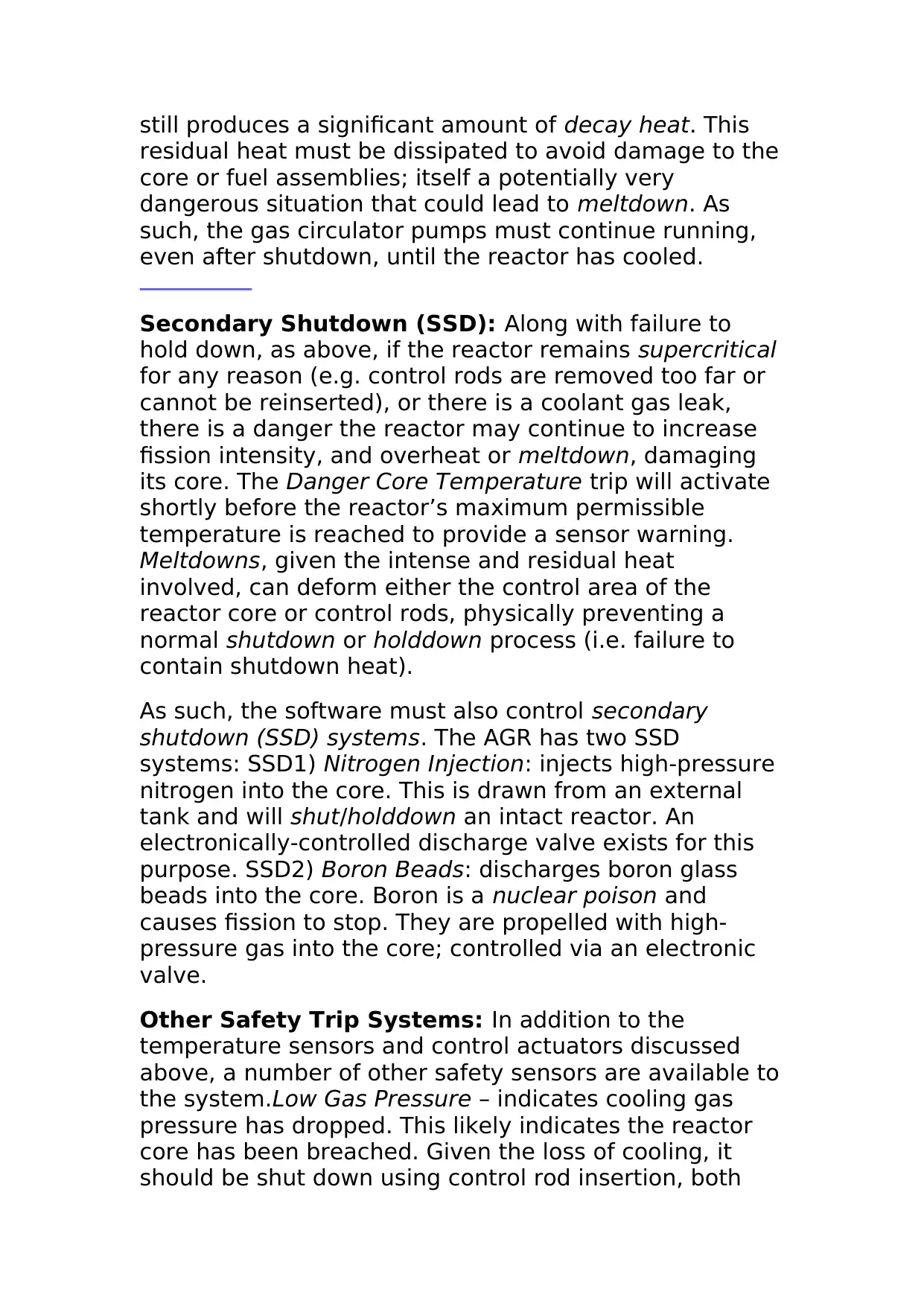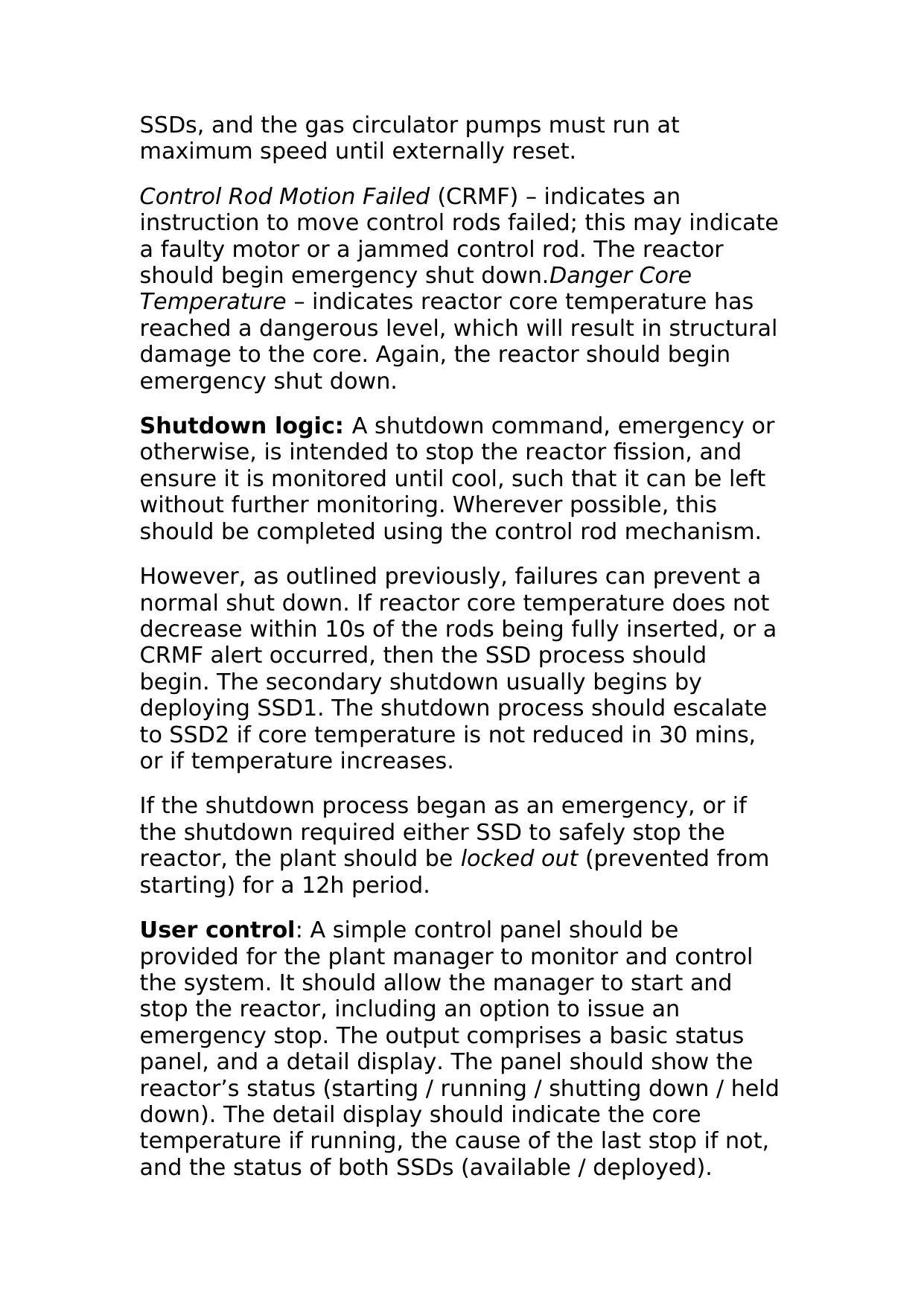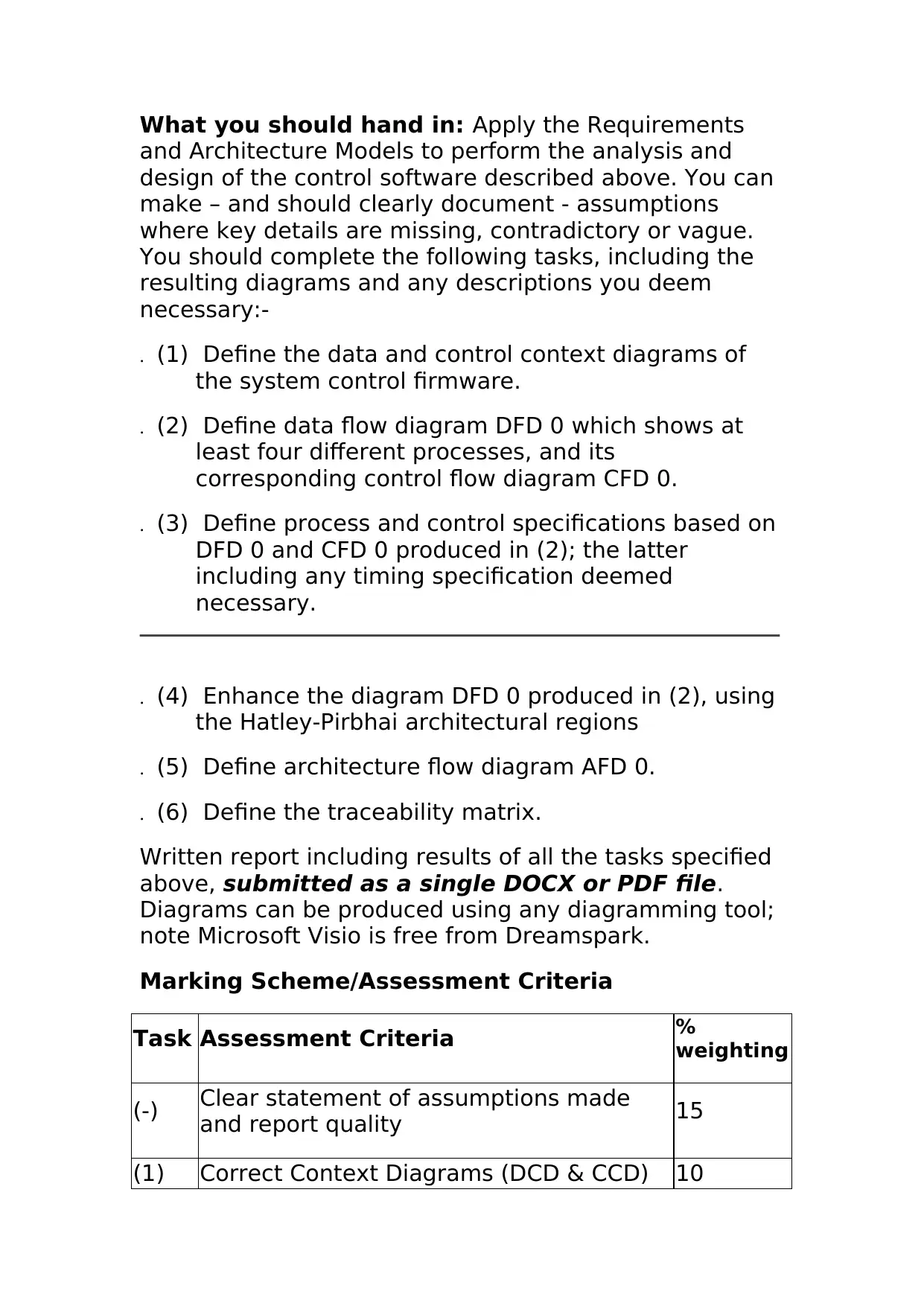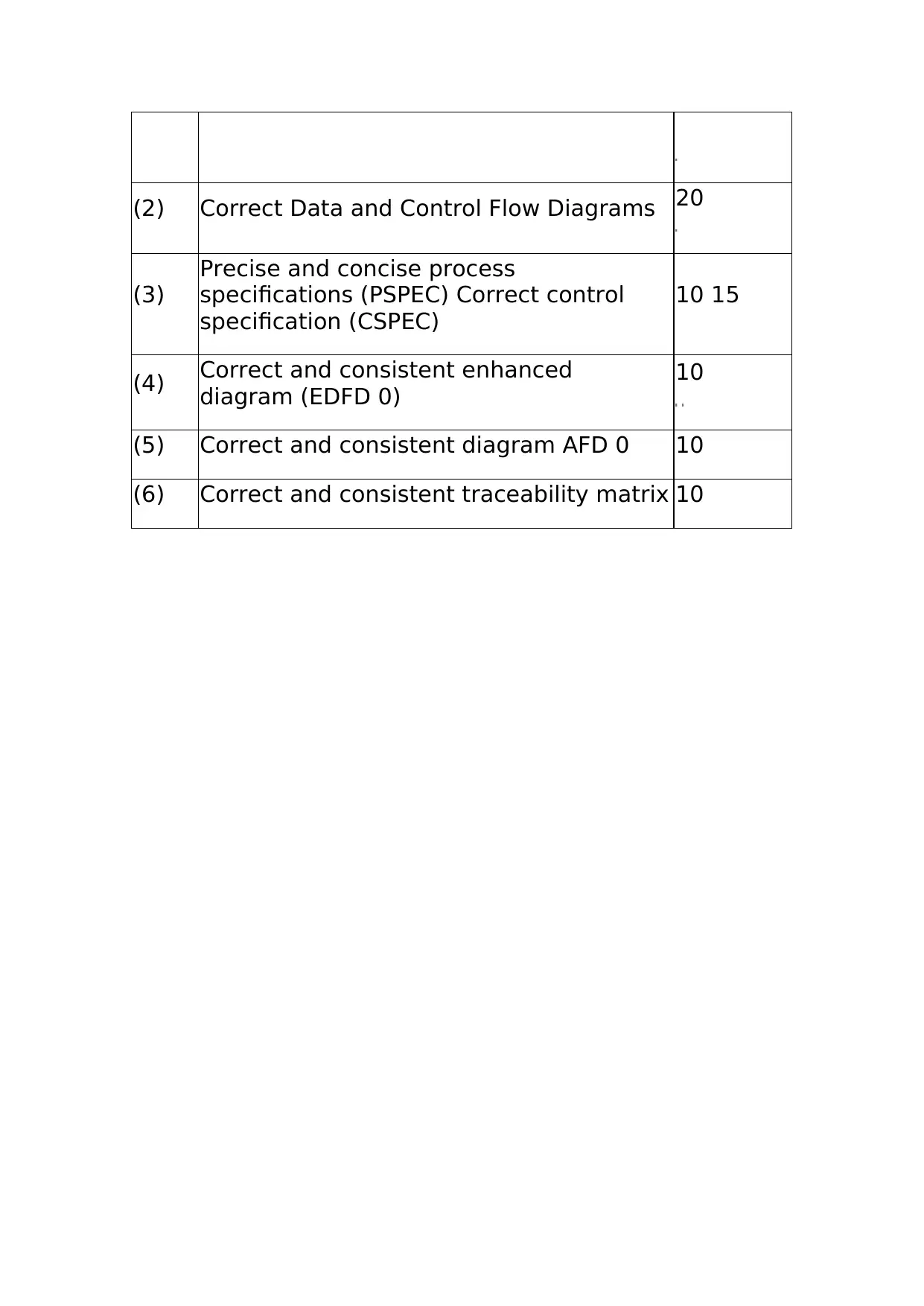The assignment is to design a control software for an Advanced Gas-cooled Reactor (AGR). The software must ensure the reactor's safe operation by controlling temperature, shutdown processes, and secondary shutdown systems. The software will also monitor various safety trip systems, including low gas pressure, control rod motion failed, and danger core temperature. A shutdown command can be initiated in case of an emergency or normal operation. The software should escalate to secondary shutdown if the reactor's temperature does not decrease within a certain timeframe or if the temperature increases. Additionally, the plant should be locked out for 12 hours after an emergency shutdown. The assignment requires students to define data and control context diagrams, data flow diagram (DFD) 0, control flow diagram (CFD) 0, process specifications, control specification, enhanced DFD 0, architecture flow diagram (AFD) 0, and a traceability matrix.
![[object Object]](/_next/static/media/star-bottom.7253800d.svg)
![[object Object]](/_next/static/media/star-bottom.7253800d.svg)
